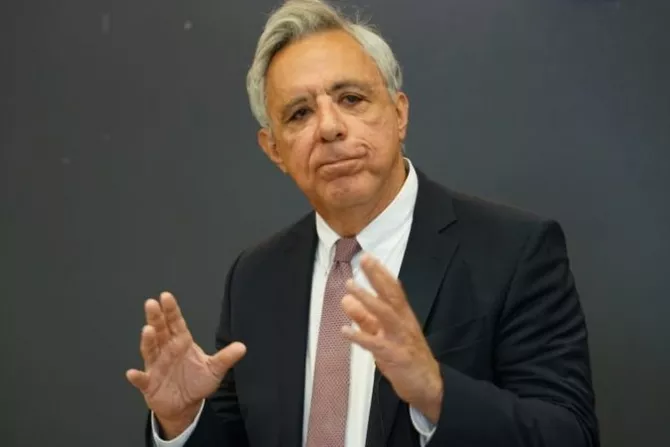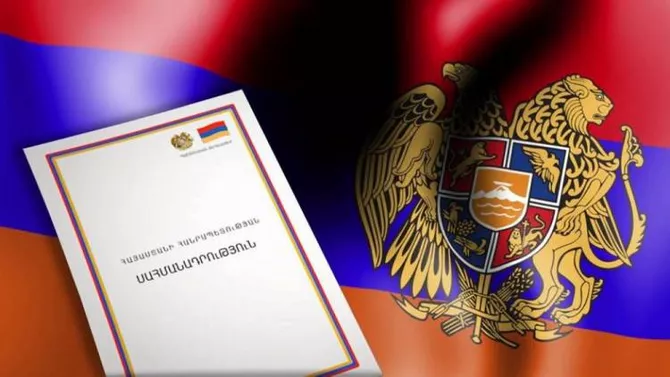
Anthony Pizzoferrato/AFP via Getty Images
When former Armenian Foreign Minister Vartan Oskanian posts a lofty message on his page to mark the Day of the First Republic of Armenia, it may initially seem like nothing more than a rhetorical exercise in national identity.
Yet a closer reading reveals something far more profound - the culmination of a political myth rooted in historical amnesia and the frustration of elites raised on revanchist illusions.
Oskanian asserts that Armenia’s independence in 2024 is “more vulnerable and weakened than at any time since 1991.” His words carry the panic of a man still thinking in the terms of a past - not one grounded in archives, maps, or international law, but a fictionalized, glorified past, often constructed on a substitution of concepts.

Photo credit: hetq.am
At the beginning of his text, Oskanian paints a dramatic picture of the collapse of the “pillars of Armenian statehood”: sovereignty, security, and unity. But he fails to acknowledge that it was precisely the political forces to which he belongs that for decades played a dangerous double game - proclaiming commitment to peace while occupying foreign lands, militarizing the region, and investing heavily in the myth of Armenia’s “great historical mission.”
Since the 1990s, when Armenian forces occupied 20% of internationally recognized Azerbaijani territory, Yerevan consciously chose the path of confrontation. And when that path culminated in the restoration of Azerbaijan’s sovereignty in 2020, a new phase began - the internal degradation of Armenia’s political class, which remains unable to come to terms with reality.
Oskanian accuses Pashinyan’s government of lacking will and strategy, claiming that Armenia “reacts to events instead of shaping them.” But what, precisely, prevented Oskanian and his allies from building a stable state during their many years in power? Why, when there was an opportunity for regional integration, did they instead prioritize establishing a military dictatorship on Azerbaijani territory in Karabakh and creating fake institutions on occupied land?
The answer is simple: they bet on the false permanence of conflict, on impunity from international law, and on the support of the Armenian diaspora. Now, with the status quo relegated to history, the world demands sobriety and maturity. Yet Oskanian proposes a return to the shadows of fear, to scapegoating neighbors, to clinging to mythology - refusing to acknowledge his share of responsibility for Armenia’s statehood crisis.
Oskanian also speaks of an “Azerbaijani invasion of Armenia’s sovereign territory,” omitting the fact that for decades, the Armenian army not only held the now-defunct “Nagorno-Karabakh” under occupation but also seven surrounding Azerbaijani districts. He conveniently forgets that Armenia long refused to recognize the borders inherited from the Soviet Union and blocked the delimitation and demarcation process, thereby provoking instability in the region.
When Azerbaijan, acting on the basis of its territorial integrity, restored control over its lands, Armenia was forced to confront what it had long feared: reality. A reality in which international law matters, and post-Soviet conflicts are not destined to remain frozen forever.
Oskanian calls the demand to amend Armenia’s Constitution “a direct attack on sovereignty.” Yet the current Armenian Constitution contains provisions that directly contradict internationally recognized borders, effectively inciting conflict. Armenia remains the only country in the region whose fundamental law implies separatist claims. Eliminating these contradictions is not a concession - it is a step toward a civilized political framework aligned with international norms.

Photo credit: commonspace.eu
Those who wish to live under the rules of international order cannot simultaneously cling to legal clauses justifying territorial occupation. The logic of national interest requires constitutional revision - not as a surrender, but as an act of responsibility.
The Day of the First Republic of Armenia, which Oskanian invokes, has long ceased to be a moment of historical reflection in Yerevan. Instead, it has become a vehicle for political exaltation. After all, the republic of 1918-1920 lasted only two years before collapsing under the weight of ethnic purges, administrative failure, and internal chaos. Celebrating a date devoid of sustainable statehood is a form of symbolic compensation - an attempt to resurrect a state that never truly matured.
Armenia and its political elite must face history head-on, not gaze into the mirrors of their own illusions. The history of the South Caucasus does not begin in 1918. Centuries of Shirvanshahs, the Irevan Khanate, the Karabakh melikdoms, Islamic architecture, Azerbaijani culture, and Turkic toponymy preceded it - much of which was erased or renamed in the 20th century.
This is why Oskanian’s appeals ring hollow. They are not about the future, but about reviving a past that never existed. Politics built on the denial of geography, culture, and justice is doomed to collapse when faced with facts.
Azerbaijan in the 21st century offers a model of rational nation-building - confidently reclaiming its territories, expanding its transport infrastructure, strengthening international partnerships, and promoting multiculturalism. While Armenian political thought remains caught between myth and fear, Baku offers a framework for regional leadership and cooperation.
Armenia now stands at a decisive crossroads - between the voices of the past that call for an illusory “Great Armenia” and the voice of the present, which offers a path grounded in realism, integration, and respect for international norms. This is not merely a political or diplomatic dilemma; it is an existential question about the kind of state Armenia aspires to be in the 21st century.
Clinging to outdated narratives, territorial myths, and denial of geopolitical realities has brought nothing but isolation, stagnation, and recurring crisis. The world has changed, and so have the rules of engagement. International legitimacy, regional cooperation, and economic interdependence now define the success or failure of nations. In this new reality, states that resist modernization and reconciliation are left behind - not as victims of injustice, but as hostages of their own myths.
Baku, by contrast, has charted a course toward forward-looking statehood - one that combines strategic pragmatism with a commitment to territorial integrity, infrastructure connectivity, and cultural pluralism. It is building not just roads and ports, but a regional model of post-conflict recovery rooted in legal principles and long-term vision. Azerbaijan does not seek domination, but stability - not exclusion, but integration.
For Armenia, the time has come to reject the politics of grievance and victimhood, and to embrace the politics of responsibility. This means rewriting not only constitutional clauses but also the collective mindset - to abandon the zero-sum logic of the past and engage in a future shaped by cooperation, coexistence, and mutual recognition.
Vartan Oskanian has made his choice - to retreat into the comfort of nostalgia and blame. But history will not be written by those who dwell in the past. It will be shaped by those who dare to face uncomfortable truths, to accept the lessons of defeat, and to turn them into a foundation for renewal.
In the end, it is not about what Armenia remembers - but what it is willing to become. And that answer, as always, will be measured not in rhetoric, but in action.
Share on social media